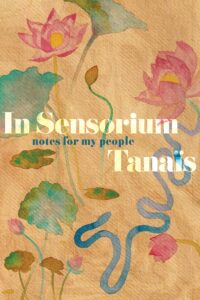
Here are the winners of the 2022 Kirkus Prize.
In a ceremony on Thursday at the Austin Central Library, Kirkus Reviews announced the three winners of their ninth annual Kirkus Prize in Fiction, Nonfiction and Young Readers’ Literature.
The winners were chosen from the 1,436 books that received the coveted Kirkus star in the last year, and narrowed down from a a shortlist released last month. Each winner receives a cash prize of $50,000. Those winners are:
FICTION:

Hernan Diaz, Trust (Riverhead)
Fiction Judges’ Statement: “This year’s finalists are an exciting group, but Hernan Diaz’s Trust stands out for the way he uses multiple perspectives and forms to push the boundaries of what a novel can do. What seems to begin as an homage to novels of the Roaring ’20s unfolds with each successive layer into a complex story of power, love, and the nature of truth. Trust is a true literary delight.”
*
NONFICTION:

Tanaïs, In Sensorium: Notes for My People (Harper/HarperCollins)
Nonfiction Judges’ Statement: “It was a pleasure to spend time with the six finalists. Each is a consummate work of art, all vastly diverse and immense in impact. In overwhelming accordance, we selected In Sensorium by Tanaïs as the winner of the 2022 Kirkus Nonfiction Prize for its daring, inventiveness, vision, and lyrical eloquence. Using the framework of fragrance and scent, the author’s work confronts aspects of our society related to women, gender, and people of color. Seductive, vital, and incomparable, this is a reading experience that endures.”
*
YOUNG READERS’ LITERATURE:

Harmony Becker, Himawari House (First Second/Macmillan)
Young Readers’ Literature Judges’ Statement: “All of the Young Readers’ Literature finalists represent exceptional prowess in their respective formats and genres, but the judges selected Harmony Becker’s Himawari House for its remarkable mastery of graphic novel conventions and its perceptive exploration of emotionally resonant, evergreen themes relating to family, friendship, and identity. The book’s brilliance lies both in the authentic cultural specificity that grounds it and Becker’s creative presentation that welcomes all readers in.”
Emily Temple
Emily Temple is the managing editor at Lit Hub. Her first novel, The Lightness, was published by William Morrow/HarperCollins in June 2020. You can buy it here.



















